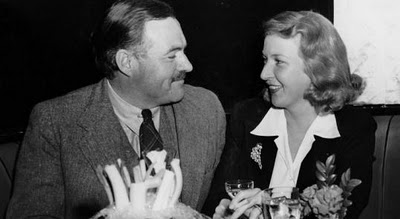Fragrances (and aromas) are a key element in the bar industry, not only is it present in food and drinks but also in the environment and even in the staff team. But what do we know about Fragrances? I thought it would be interesting to cover part of its history and get new ideas form it. This is a long post! be aware!
Why is Fragrance so evocative? the sense of smell feeds directly into the part of the brain that is responsible for memory and emotion. Fragrances, as well as sound, can transport you to your dreamy fantasies and your most treasured memories. As such fragrance has also become a vital part of brand communication and part of our daily rituals…think about scented candles, a cup of coffee, the aroma of spa’s when one seeks relaxation.
Let’s see a few interesting facts,
The word perfume is derived form the Latin per fumum, meaning by or through smoke, as it was through burning incense the communication with the gods was reinforced.
Fragrances in our minds are linked to lust, luxury, pleasure, hedonism, mystery, and indulgence. The origin of this associations may be to the earliest users, kings, pharaohs, emperors, priests, monarchs, courtesans and attendants, magicians and alchemists.
Christianity, Buddhism, Hinduism, Islam, Shintoism, they all use fragrances in pursuance of their faiths. The use of fragrances developed in China, India, Egypt and Mesopotamia and later on expanded to Greece, Palestine, Rome, Persia and Arabia. The crusaders brought them into Europe and the Western culture.
It is believed that was in the Mesopotamia that the production of glass was discovered, as well as being one of the first regions along China to discover the production of distilled spirits and ethanol. Alchemist and sorcerers used alcohol in their practices. The Indu civilization traded with Egypt and incense statuettes were unearthed in India.
Confucius proclaimed that incense and perfume mitigated the bad smells.
Burning of incense attracted the Jiki Ko Ki -the spirit that eat smoke- In Japan according to the legend.
In the Garden of Eden fragrant woods like cedarwood or myrtle were used to build temples. Here in the Mesopotamia was that the classic techniques of pressing, maceration, and enfleurage, were developed.
Pictographs dated around 1500 BC detail Queen Hatshephut bringing back frankincense trees fro replanting in Egypt. Courtesans used perfumes on their heads consisting of animal fat impregnated with aromatics; the heat melted the fat and covered the body. Ramses offered incense to the Gods, and Nefertiti liked honey and orchid-leaf in her fragrances.
At the temple of Horus appears a perfume concoction known as Kyphi. Early Alchemist like Hermes Trismegitus and Zosimus set various records of their arts.
The Bible is also full of references to fragrances. In Exodus, God gave Moses instructions for a holy perfume for himself and a different one for his priests. The visit of the Queen of Sheba to Solomon was motivated by her wish to keep the trade with the Arabian peninsula for frankincense and myrrh.
Jesus of Nazareth received myrrh and frankincense as a gift at birth, used spikenard to wash his feet (present in Kyphi), used myrrh in the sheets after his crucifixion (myrrh being also used as antiseptic and antimicrobial). Through Trade ad cultivation Palestine became a great source of aromatic wealth and a key trade route for the caravanserai.
The Greeks developed the use of fragrances to praise their Gods but also for hedonistic purposes. The formulation for the goddess Aphrodite created such a sensual desire that the term aphrodisiac was used. Hippocrates developed the science of medicine and herbalism; Alexander the great conquered vasts territories and acquired a taste for perfumes form the Persian Kings. It was Aristotle who linked furthermore the science of alchemy with aromatic substances. The fragrances most used b the Greeks were rose, saffron, frankincense, myrrh, violets, spikenard, cinnamon, and cedarwood.
Romans contributed with Pliny The Elder and his discovering of condensation of oils to be collected in wool, as well as specializing in the manufacture of quality glass which late ron developed in Venice.
The Roman elite kept Acerra, small incense caskets, carried Ampullae, perfume containers. Perfume were used at The Games to mask the malodorous of a bloodstained arena. Roman Emperor Nero had a double ceiling designed to drop flower petals on their guests and a very creative use of scented doves to fragrance the air with their wings. The Roman Empire had incense burners lit all over Europe.
In the Middle Ages it was common to burn incense as well as to employ lavenderess to place sprigs and sachts of aromatic herbs around the rooms and beds.
During the Black Death plague (1347-51) people carried sachet of aromatic herbs, small floral bouquets and important people had servants walking with torches burning aromatic herbs in front of them.
Th first European treatise on distilling was written by the Catalonian Arnauld the Villanova around 1310, it detailed the extraction of essential oils of lavender, juniper, pine, rosemary.This early and all previous Alchemists were the founding fathers of chemistry.
In the following centuries the world became more explored and with it new elements and aromatic ingredients. Queen Elizabeth I who was said did not favor taking baths became fond of the use of fragrances becoming de rigeur in court. Catherine de Medici traveled with artisans skilled in the art of perfumery and poisons, and her astrologer Nostradamus inhaled incense as part of his preparations. His second wife was known for her herbal perfumes.
Henry IV wrote to his mistress Gabrielle d’Estree, “Don’t wash my love, I’ll be home in eight days”.
The French King Louis XIII favored Neroli, Louis XIV compounded his own fragrances, Louis XV lavished wealth on “La Cour parfumee” – The perfumed Court – dousing even the fountains. British Kings Charles I and II also had their fragrance adviser. herbs Sachets, vinaigrettes, perfumed water, perfumed alcohol, pomanders…they all contributed to mask the lack of personal hygiene of the time.
The new profession of perfumery was in development by apothecaries, spicers, chemists. In 1708 Charles Lilly introduced scented snuffs and a fragrance consisting of orange flower, musk, civet, violet, and amber. Perfumeries opened in London by William Bayley, Juan Floris, William Yardley and Houbigant and Lubin in France.
Fragrances were becoming popular and reaching the market place, pest, and the general pestilence found in the streets helped to combat the ambient odors of prisons, hospitals, industry, dirty rivers, butcher shops, coal and anywhere where humans and their lack of hygiene of the time congregated such as churches or theaters.
The glass industry also developed in England at the time, allowing for the creation of different colored glass, been a luxury its use focused in perfumes, cosmetics, toiletries and spices.
Napoleon Bonaparte loved aromas, using several bottles a day, he also asked his lover not to was as he was returning home. Napoleon favored citrus and herbal smells. Josephine favored musk oil and violets. Queen Victoria of England wore shawls steeped in patchouli hence patchouli shawls became popular. The rule of the day dictated that perfume had not to be used directly on oneself. by the 19th century the industrialization of perfumes was already in the air.
Guerlain in 1861 created Eau Imperiale for Empress Eugenie, the influential wife of Napoleaon III, this fragrance containing neroli, rose, geranium, Sandalwood, musk and the synthetic chemical coumarin. In 1882 Fougere Royale and Jicky were two popular fragrances, both containing coumarin. Perfumeries from England, France and Spain were reaching new horizons in a new global marketplace. Fashions and perfumes were linked forever and together they conquered the world.
“I am no longer interested in dressing a few hundred women, private clients; I hall dress thousands of women. But…a widely repeated fashion, seen everywhere, cheaply produced, must start from luxury.” Gabrielle Coco Chanel
In 1905 Francois Coty (creator of the perfume Jicky) said, “Give a woman the best product you can compound, present it in a container of simple, but impeccable taste, charge a reasonable price for it, and a great business will arise such as the world has never seen”
It is interesting to compare the prices of some essential oils, Lavender costs around u$20-40 kilo, while rose oil costs u$1300-4000/kg while eucalyptus is just u$7/kg.
It takes about 7 million jasmine flowers to produce 1 kilo of essential oil, hence its price of u$2500/kg
The use of synthetic into perfumery received a good push when in 1921 Coco Chanel launched her Chanel no. 5 which includes synthetics along rose and jasmine oils. its success inspired other houses to experiment with synthetic ingredients.
Now that you know a little bit of the history of perfumes, lets think on the future and how economics, everyday experiences, technology, green trend, and fashions are linked together and bring those concepts to your restaurant or bar, to your recipes or even your staff team. What values and emotions do you want to reinforce? What type of emotions and memories do you want your guests to have at your place? how would you achieve this through your recipes or concept?













